






 |
|||||||
 |
 |
 |
 |
 |
|||
 |
|||||||
|
John Hogan Fi Primer 6SN7 / 300B John Hogan is a legendary name in the single ended underworld. His is a name that some have heard, many won't know, and whose amps almost no one has actually seen or heard in person. But I’m happy to say that now I'm in the know! Cutting to the chase, the John Hogan “Fi Primer” 6SN7 / 300B below is without question one of the very best sounding amplifiers I have ever heard. John Hogan was an innovator and tube amplifier builder who produced perhaps 60 single ended tube amplifiers before his death in 2006. He is single-ended Internet famous for two things in particular, both of which are sins of one order or another. First, John used push pull output transformers in his single ended amps. Second, an ugly chassis; in John’s case often featuring black duct tape and hand lettering in gold or silver liquid pen. I suppose there is a third, which is a virtue; great sound. John’s amps had a bit of a following a while back, and the sound is supposedly uniquely superior. So about the transformers. Single ended amps call for carefully air-gapped and hand wound transformers, often costing hundreds or even thousands of dollars. The transformers are at the heart of the sound of a single ended amp, and so their quality cannot be overlooked. The push pull transformers John used were from 1930’s Webster 2A3 amplifiers. In the 30’s push pull 2A3 was the big gun, offering the most power and the best sound, and they were used in big console radios as well as in juke boxes. But these transformers were never meant to be used in single ended amplifiers. They are unsuitable on paper. The uniquely rough cosmetics of John’s amps are unmistakable and they definitely stand out in a crowd! They seem to usually feature black duct tape covering the odd opening or two. He appears to have taken a salvaged chassis and drilled his own holes where he wanted them (existing holes be damned). Unused tube holes or random openings in the chassis? Black duct tape. Hey, it’s carefully applied. In my case there are also two solid panels applied, one wooden and one metal, to cover a hole and to contain the input and volume / hum controls. And the honest truth is that in person all of this actually presents a good bit better than one expects. So how does it sound? In a word, enlightening. The sound of the Fi Primer 300B is absolutely one of the best I’ve ever had if euphoric enjoyment of music is the measuring stick. It really just doesn't have any real flaws that I can find from a fidelity standpoint. Very low hum at idle too, especially for a 300B, which is welcome icing on the cake. This is an amp that puts everything in the room in a 3D way that is all its own and that is certainly at the top of the game. And it's a 300B, which is really surprising to me. Over the years and through 9 300B amplifiers, this tube has evolved into a risky one for me. Although it can sound quite good, it’s not my favorite for a number of reasons, the biggest being that smaller and massively more affordable triodes like the 45, 2A3 and the 1626 simply sound better. But this particular 300B by John Hogan turns all of that on it’s head. Back to back with an Alan Eaton 45, a Yamamoto 2A3 and a Will Vincent type 10 amplifier, the Hogan 300B not only holds its own, many might declare it the winner. I’ve stopped trying to find the “best” and will simply acknowledge that this one sounds absolutely incredible. If this sound was wrapped in a slick polished stainless steel chassis with massive 100 pound potted transformers and a forest of can capacitors it would cost a fortune. From the info I’ve found online it seems like John made around 60 amps, and there is some evidence that the amp below was his personal amplifier. If true that would be a treat! At any rate, I hardly ever see a Hogan amp come up on the market. I’ve known about the Hogan amps since 2009 or so, thought about buying one back then but hesitated because of the cosmetics and of course someone else snapped it up. I’m quite happy to have been able to snag this one 11 years later. Sound-wise this could be a new benchmark for holographic, emotional output. If you can find one, super highly recommended. |
||||||||
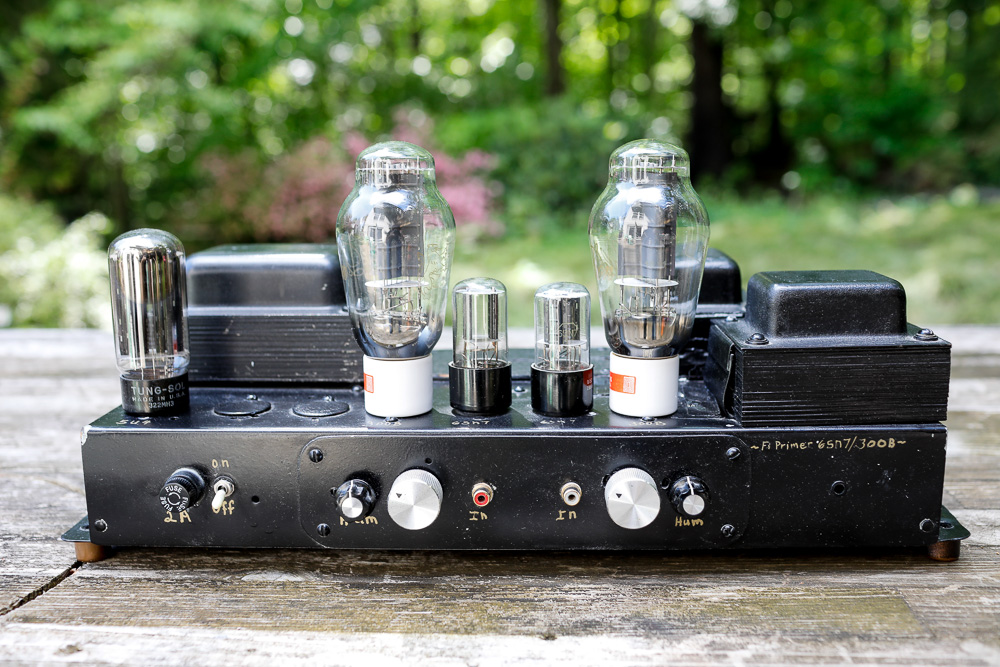
|
||||||||
|
If you require Karma in your amplification, here it is. |
||||||||
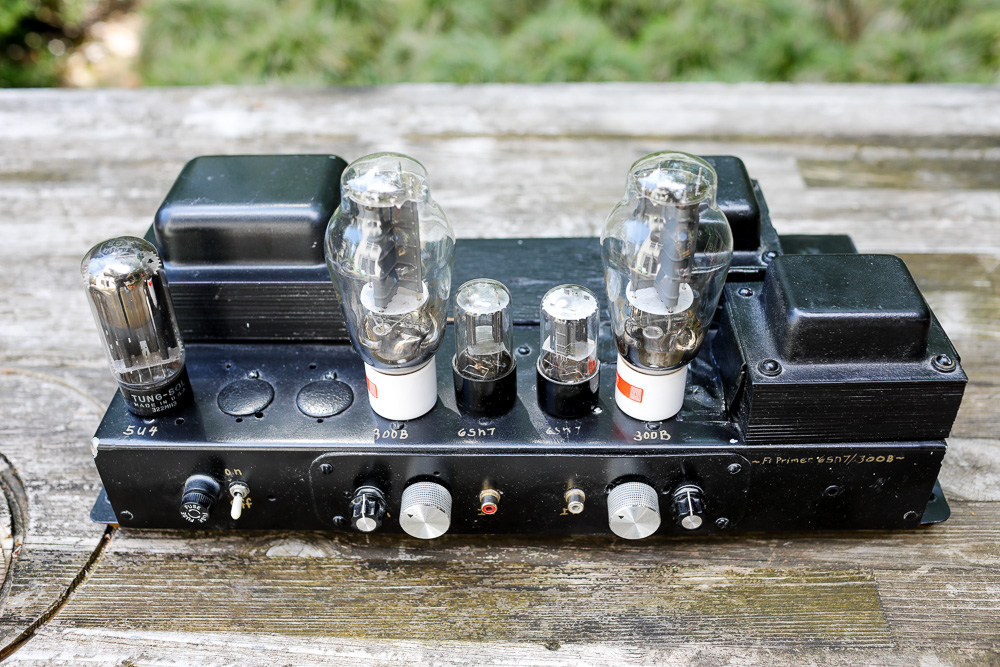
|
||||||||

|
||||||||
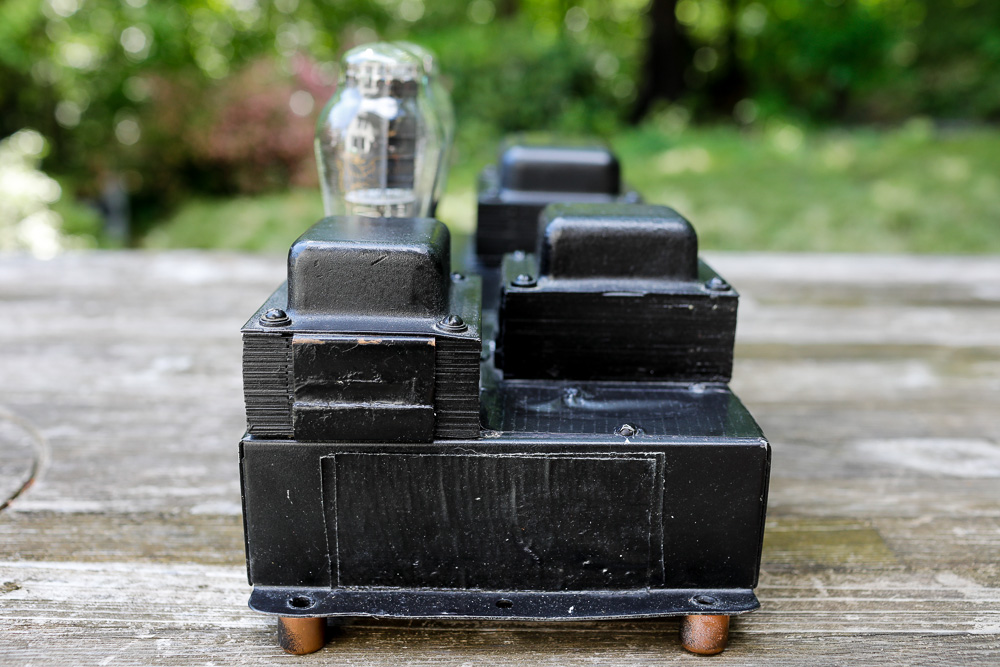
|
||||||||
|
Duct tape is one of the things you remember about a John Hogan amp. Having the amp in hand, and having heard it, it’s just not an issue. Have a close look at the photo above. Is it so objectionable? I’ve grown fond of the industrial beauty tube amps from builders like Lance Cochrane and Jim Nichols. I concede that the Hogan amp pushes those boundaries a bit, but overall it presents much better in person than one might imagine. And once it’s playing no one really cares anymore what it looks like. Model T paint and all. This is the amplified version of the proverbial “beauty is on the inside”. |
||||||||
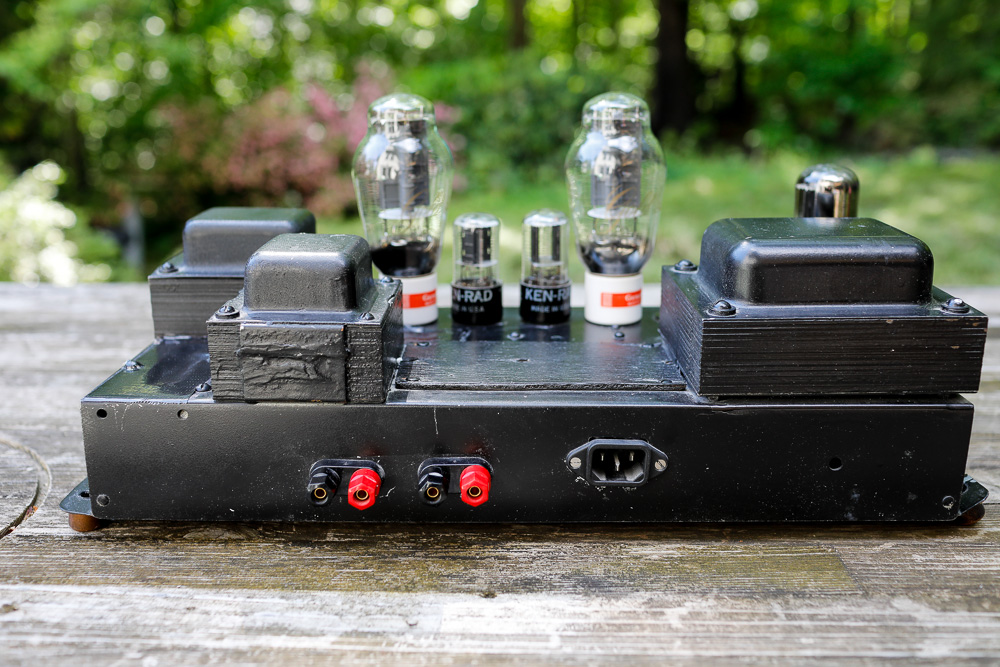
|
||||||||
|
Old parts, new circuit. This is the essence of what I think an ideal amp would be. |
||||||||
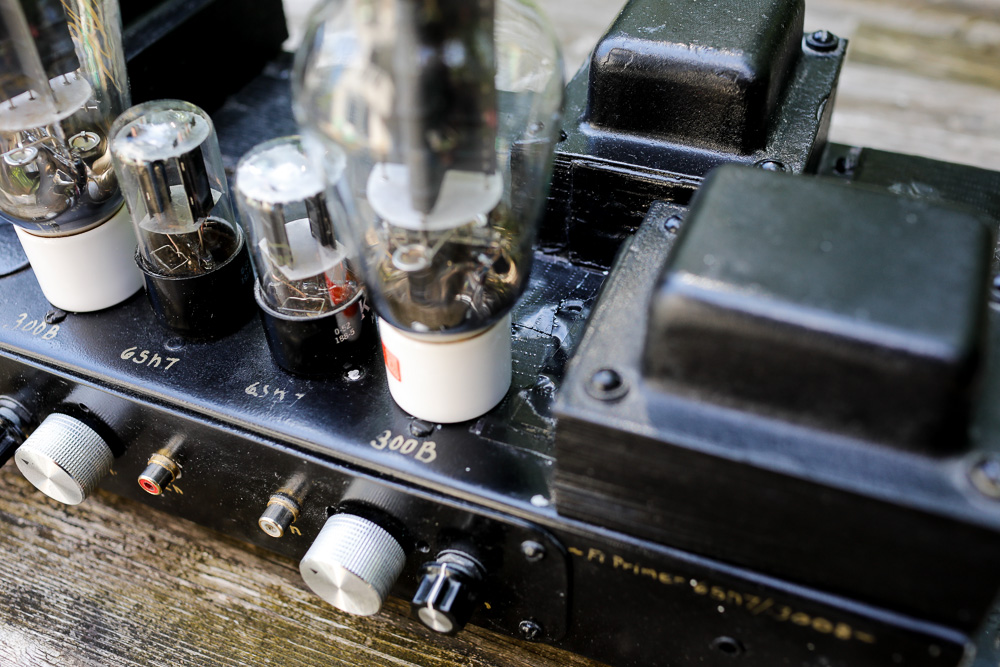
|
||||||||

|
||||||||
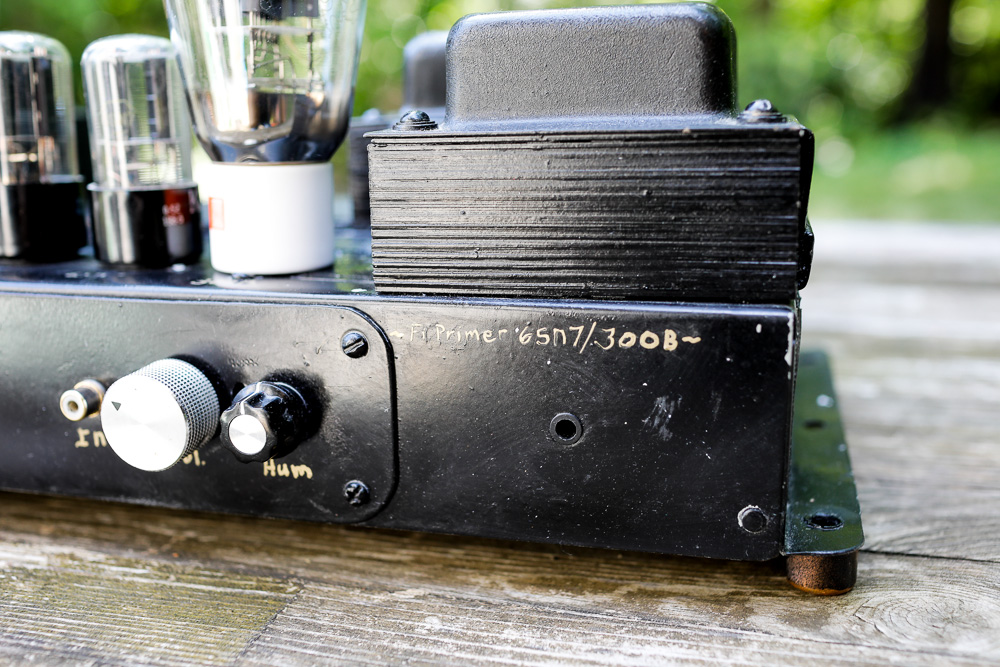
|
||||||||
|
I actually really like the handwritten lettering on the amplifier, which surprises me. I thought it would be tacky but instead its intimate. I think this is something many of the hi-end builders should look at doing in one respect or another. Radu Tarta for example makes very intricately executed laser cut top plates for his amplifiers, and it is a kind of customized signature that most builders don't go to the lengths for. Quite frankly it makes the amp a one of a kind item, labeled by the Creator. Although in this case the amp certainly didn’t need any help being one of a kind. |
||||||||
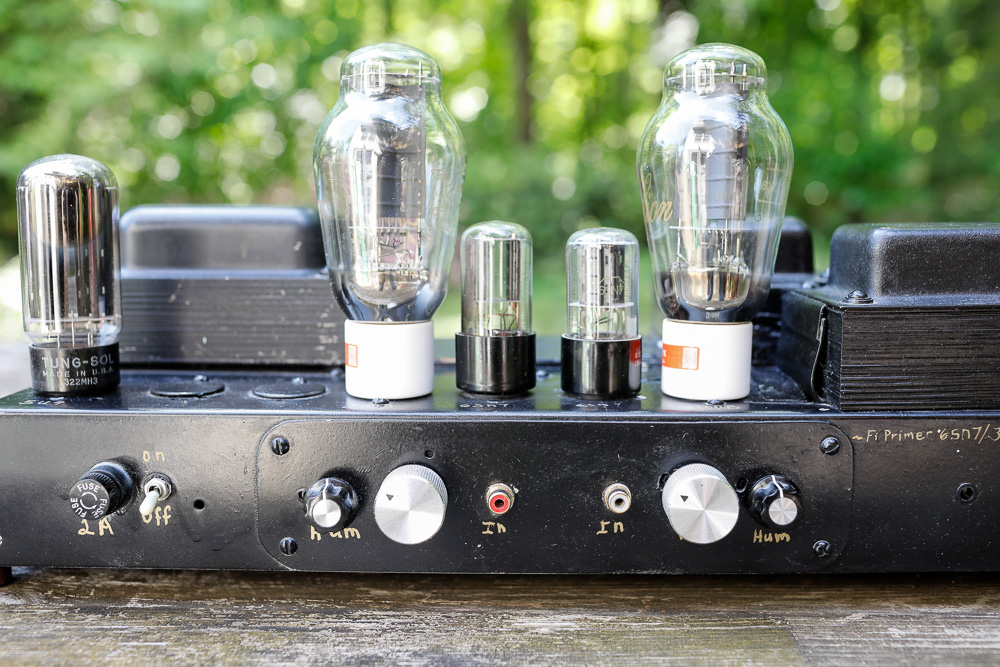
|
||||||||
|
One thing you’ll see Google imaging John’s amps are some fairly high end 300B tubes in place. Emission Labs, KR, VVT. People spent $1000 or more on output tubes for these amps. I can see why, this amp deserves it. Here it is with my relatively modest Russian Gold Lion 300B, but I must admit that the Takatsuki are calling my name… |
||||||||
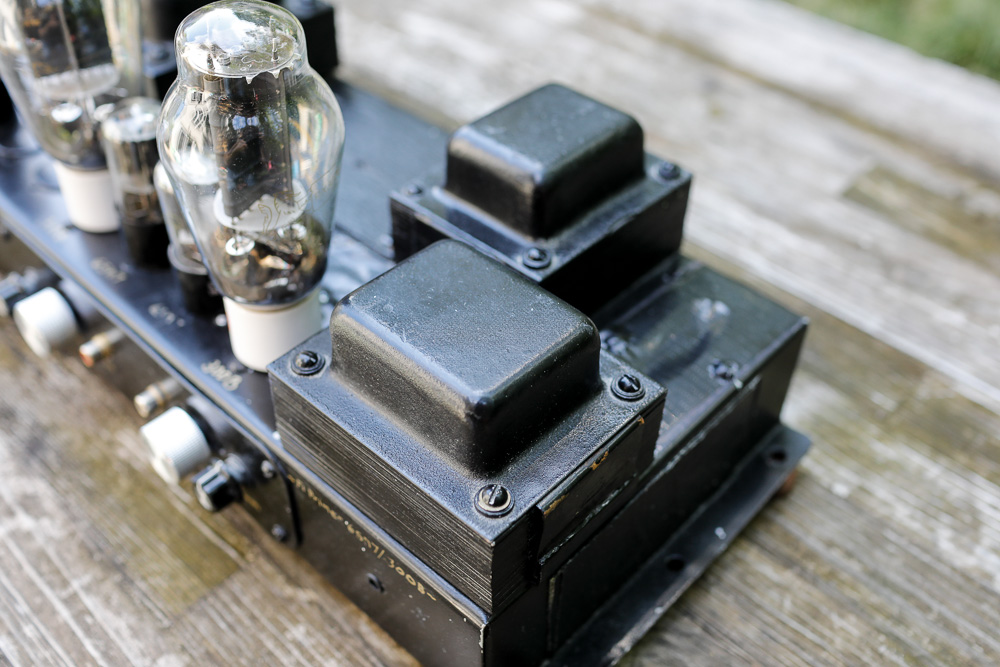
|
||||||||
|
The 1930's push pull Webster output transformers are supposedly one of the secrets to the sound of this amplfier. These were for use in a push pull configured 2A3 amplifier, but John famously used these transformers in his single ended builds. |
||||||||
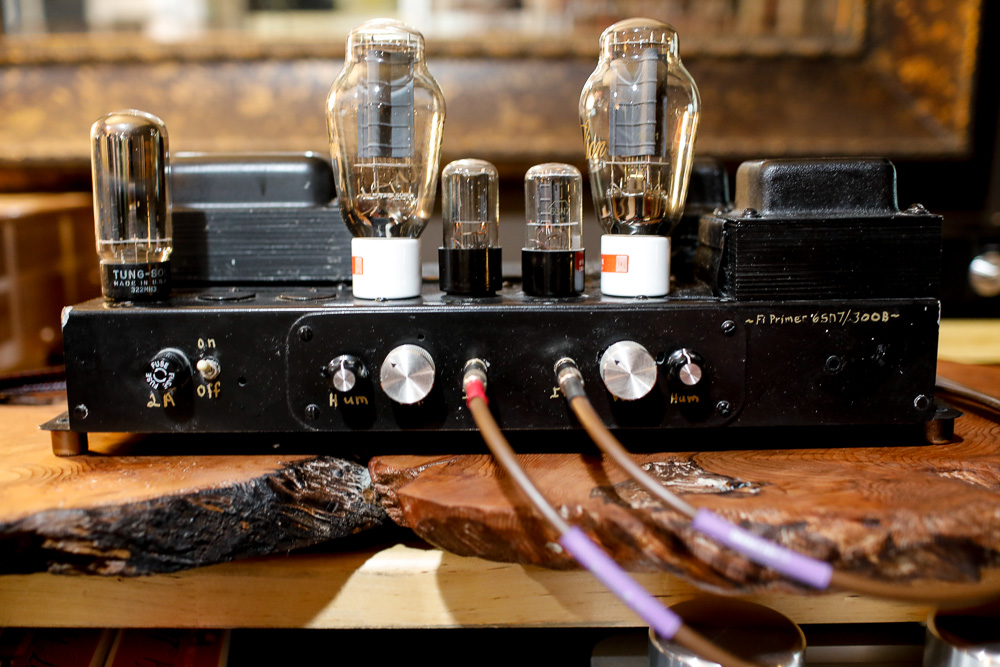
|
||||||||

|
 |
|||||||
 |
 |
 |
 |
 |
|||
 |
|||||||
 |
|||||||